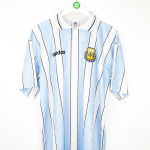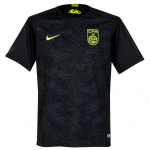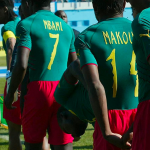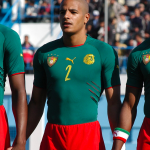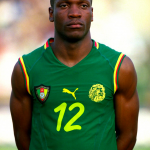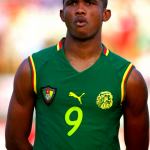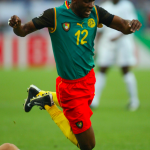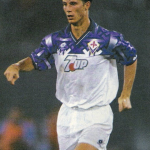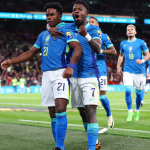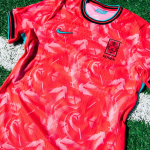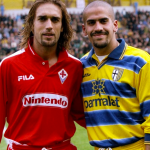
The top 8 best kits banned by federations and governments
From the Cameroon-FIFA clash to the sensational error of Fiorentina
March 29th, 2021
Football shirt designs are often vehicles for a team's stories, messages and symbols. Not all designs, however, respect the rules and traditions of a country, of a federation, and often due to some neglected details a shirt can never see the light. Overcoming the approval of a club's team and designers is not enough to guarantee its debut on the best stages and on more than one occasion it is even governments that intervene to block the process that starts from the concept and ends on the pitch and in the stores. Innovation does not always find unanimous approval and the cases of "banned kits" are more than one can imagine.
Fiorentina 1993-94 - Lotto Away Kit
Fiorentina's 1992-93 season starts with the best wishes, but it will be a very unfortunate season that will bring the Tuscans to Serie B. Lotto is in the second year with the Viola and enters history through the wrong door. The away shirt is white with geometric patterns on the arms and shoulders made with different shades of purple. The three-dimensional effect immediately catches the eye and the design was one of the most eclectic in Serie A, but an attentive spectator signaled the presence of a recognizable Nazi symbol to the club. The swastika put pressure on the brand and the case became national, forcing the Venetian brand to replace the jersey during the current season, withdrawing it from the team's availability at the end of November. To date it is the only banned kit in Italian football.
Cameroon 2002 - PUMA Home Kit
The aesthetic history of Cameroon has been linked to PUMA since 1997 and in the course of these 20 years of collaboration there are several episodes on the edge of reality. The first dates back to 2002, with the launch of the new jersey for the Africa Cup that Eto'o and Olembé-Olembé's Cameroon won in Mali. The shirt has been nicknamed "sleeveless" because it is literally sleeveless, almost like a basketball tank top. If on the one hand the FECAFOOT did not encounter problems in what was a variant never seen up to that moment, on the other hand FIFA does not tolerate that the indomitable lions of Africa show up with that jersey at the Japanese-Korean World Cup. The official justification relating to the shirt concerns the inability to attach the tournament patch on the sleeves.
Cameroon tried a push-and-pull they knew they couldn't win, but despite the black sleeves that were added later - ruining PUMA's design experiment - the shirt remains a milestone in football jersey designs.
Cameroon 2004 - PUMA Home Kit
Cameroon, 2004 season episode 2. The second episode of the series that pits the African national team against the most powerful world football organization is the real challenge. After the sleeveless shirt, Cameroon in 2004 launched with PUMA a sort of "onesie", a racing leotard in red and green. The unique piece is another 1-of-1 design, never seen before, and FIFA reacts with much more force than two years ago. Immediately after the 2004 Africa Cup of Nations match against Tunisia, Sepp Blatter legislates on the new kits, stating that "all shirts and shorts must be separate items of clothing". Cameroon will continue to play with that uniform, ignoring the new rule coming from the Nyon offices. The challenge of Cameroon excites the professionals, but will have to give up when a fine of 130 thousand euros arrives from the same offices and 6 penalty points in the 2006 World Cup qualifying group. The courage of the Indomitable Lions is at the highest levels, but the partial say FIFA 2, Cameroon 0.
Brazil 2013 - Nike Third Kit
The 2014 World Cup for Brazil was a dream and a nightmare at the same time, because on the one hand football returned to Rio but on the other hand Mineirazo - the historic 7-1 defeat against Germany on 8 July 2014 in Belo Horizonte - too big a stain to be erased. The stories around that world championship are many and among these there is the one relating to the third Nike kit launched in 2013 but which has never seen the light. The "blackout" kit was first approved by the Brazilian Football Federation but then the same decided not to let players wear it due to an ancient rule on shirts that only uses yellow for the home shirt and blue for the away shirt. The only two colors foreseen obliged Neymar & Co. to give up a jersey that would have upset the Brazilian tradition.
Mexico 1999 - Garcis Home Kit
From challenges that exceeded even the imagination of the fans to challenges that instead remain shrouded in mystery. The 1999 shirt of the Mexican national team produced by Garcis - a Mexican brand that wore El Tricolor between 1999 and 2000 - used a pattern with the Mexican federation logo on the front. No veto has arrived from FIFA, from the federation or from other football bodies, but the Mexican federal government has decided to ban this shirt. The reason still remains unknown today.
China 2018-19 - Nike Away Kit
The aesthetics of the Chinese national team have always respected inflexible canons and even in the face of masterpieces like this shirt they remain impassive. The strict rules forced Nike to never see completed the process of this completely black kit with a pattern that recalls the dragon motif repeated throughout the shirt. As in the case of Mexico, the Chinese government also intervened here together with the Chinese Federation to block the debut of this currency. One of the hypotheses is related to the dragon symbol: many believe that the dragon, considered sacred in China, may have been the real problem. The veto on this shirt came too late to stop international sales.
Argentina 1994-95 - adidas Home kit
The model that adidas proposed to the AFA before USA94 required the intervention of Julio Grondona, president of the federation at the time, who stopped production. The albiceleste pattern was the basis of the kit as tradition dictates, but the reason for the ban is the color of the outlines of the stripes. The federation rules provided for the only use of light blue and white on the home shirt, without the addition of other colors and black represented an insurmountable obstacle.
Barcelona 2020-21 - Nike Kit

As a bonus track there is a surprise Barcelona, guilty of having rejected a proposal from Nike for rather strange reasons. In 2019 Mundo Deportivo reported the news of a refusal by the Catalan company of a design proposed by Nike. The shirt - which would have been in the kits this year - features the cross of St. George, the patron saint of Barcelona, as a pattern. While the style convinced the club, the base color chosen for the shirt forced Barça to refuse the shirt as it was "too close to the colors of Real Madrid". The accused "blanco" played a decisive role in the non-choice of the shirt and the fanaticism against the cousins of the capital was the master.








